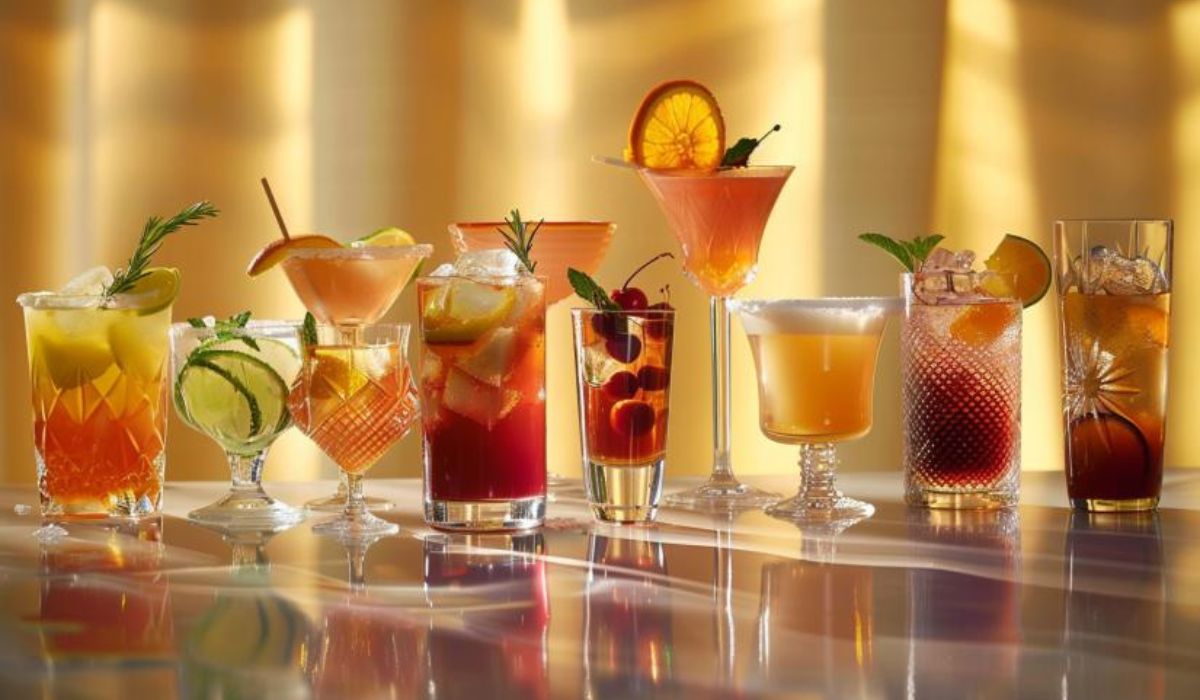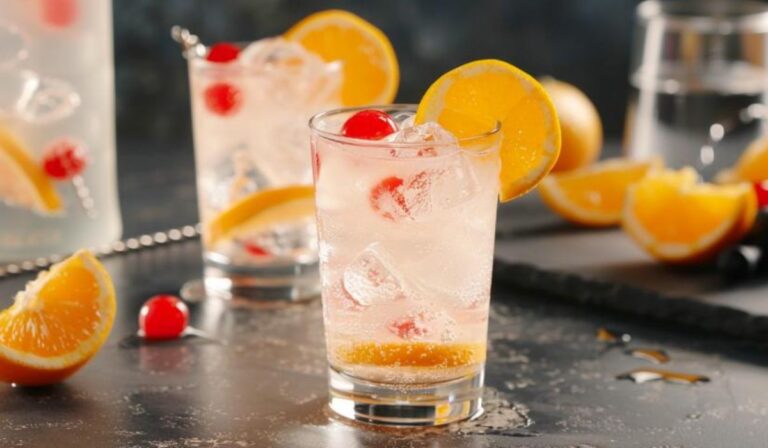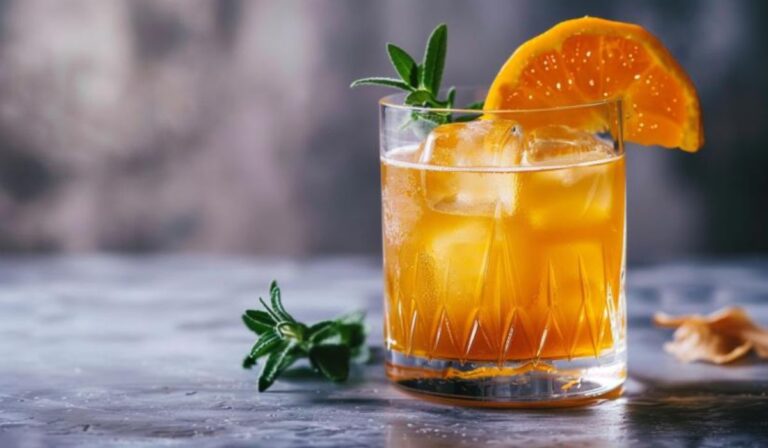Hardest Cocktails: Recipes

Crafting a perfect cocktail is often seen as an art form, requiring a delicate balance of technique, creativity, and precise measurements. Some cocktails are particularly challenging to make, whether due to complex ingredients, intricate preparation methods, or the need to achieve a harmonious balance of flavors. From shaking to stirring and muddling to infusing, these advanced cocktails test a bartender’s skill and patience.
In this guide, we explore some of the hardest cocktails to make and why they are considered challenging. We also discuss the unique ingredients and the importance of mastering technique to create these extraordinary drinks. If you’re ready to take your cocktail-making skills to the next level, join us as we dive into the world of complex cocktails.
Also Read: Best Gin Cocktail Recipes
Commonwealth Cocktail
The Commonwealth cocktail is known for its complexity, boasting a staggering 71 different ingredients. This cocktail represents a unique challenge for bartenders, requiring meticulous planning and a diverse array of components. Here’s a breakdown of the ingredients and a general approach to making this record-setting cocktail.
The Commonwealth cocktail includes a wide variety of components. Here is a categorized list of some of the ingredients commonly used:
Base Spirits
- Bourbon
- Gin
- Scotch
- Brandy
- Rum (various styles)
- Vodka
- Tequila
Liqueurs
- Aperol
- Campari
- Maraschino liqueur
- Elderflower liqueur
- St-Germain
- Amaretto
- Irish Cream
- Blue Curaçao
- Green Chartreuse
- Yellow Chartreuse
Bitters
- Angostura bitters
- Orange bitters
- Peychaud’s bitters
- Mole bitters
Fresh Fruits
- Pineapple
- Banana
- Orange
- Lime
- Lemon
- Grapefruit
- Mango
- Papaya
- Kiwi
- Mixed berries
Spices and Other Ingredients
- Nutmeg
- Cinnamon
- Cloves
- Cardamom
- Allspice
- Ginger
- Vanilla extract
- Mint leaves
- Basil leaves
- Lemongrass
- Coconut milk
- Cream of coconut
- Simple syrup
- Grenadine
- Falernum
- Hibiscus flower (for tea)
- Black tea
- Coffee
- Tonic water
- Soda water
- Ginger ale
Process for Making the Commonwealth Cocktail
- Preparation: Gather all ingredients and categorize them (base spirits, liqueurs, bitters, fresh fruits, spices, etc.). Consider preparing elements like juices, infusions, and muddled fruits ahead of time.
- Mixing: Start with the base spirits in a large container or punch bowl. Add fresh fruits and spices. Techniques like muddling or infusing may be required.
- Adding Liqueurs and Bitters: Gradually add the liqueurs and bitters to the base, tasting and adjusting as needed.
- Final Adjustments: Add sweeteners like simple syrup and adjust tartness with citrus juices. Incorporate soda water if desired for dilution and effervescence.
- Serving: Serve in a punch bowl or large communal container. Garnish with a variety of fruits, spices, and herbs for visual appeal.
- Tips for Managing a Cocktail with Many Components
- Work in Stages: Prepare in segments to avoid overwhelming yourself.
- Taste and Adjust: Continuously taste and adjust for balance.
- Collaborate: Make the Commonwealth cocktail with friends to share the workload and enhance the experience.
- Substitutions: If an ingredient is hard to find, use suitable substitutes without compromising the overall flavor profile.
The Commonwealth cocktail represents a unique and ambitious approach to cocktail-making, challenging both in its ingredient list and in the complex process to create it.
Also Read: Jalapeno Margarita Recipe
Ramos Gin Fizz
The Ramos Gin Fizz is a classic cocktail known for its rich, creamy texture and distinctive foam. It requires intense shaking to achieve the desired consistency, making it a challenging drink for bartenders. Let’s explore the ingredients, the recipe, and some tips for creating a perfect Ramos Gin Fizz.
List of Ingredients
- 2 ounces of gin
- 1/2 ounce of lemon juice, freshly squeezed
- 1/2 ounce of lime juice, freshly squeezed
- 1 ounce of simple syrup
- 1 ounce of heavy cream
- 1 egg white
- 2-3 drops of orange flower water
- Soda water, to top off
- Ice (for shaking and serving)
Recipe for Ramos Gin Fizz
- Combine Ingredients: In a shaker, combine gin, lemon juice, lime juice, simple syrup, heavy cream, egg white, and orange flower water.
- Dry Shake: Shake vigorously without ice for at least 30 seconds to emulsify the ingredients and create a stable foam.
- Wet Shake: Add ice to the shaker and continue shaking vigorously for an additional 1-2 minutes to chill and further aerate the mixture.
- Strain and Serve: Strain the mixture into a tall glass, like a Collins glass, without ice. Top off with soda water to create the final fizz and foam.
- Garnish: Optionally, you can garnish with a twist of lemon or a sprig of mint.
Tips for Achieving the Correct Consistency
- Use Fresh Ingredients: Fresh lemon and lime juice, along with fresh egg whites, are crucial for achieving the right flavor and texture.
- Vigorous Shaking: The key to a good Ramos Gin Fizz is vigorous shaking, particularly during the dry shake stage, to create a stable foam.
- Experiment with Shaking Time: Some bartenders recommend shaking for a full 10-12 minutes for optimal results. If this seems excessive, use a cocktail shaker with a blender ball to aid in creating foam.
- Serve Immediately: The foam will start to settle over time, so it’s best to serve the cocktail immediately after preparing it.
- Chilled Glass: Using a chilled glass helps maintain the cocktail’s cold temperature and enhances the foamy texture.
The Ramos Gin Fizz is a labor-intensive cocktail, but the results are worth the effort. By following these tips and practicing your shaking technique, you can achieve the creamy, frothy texture that makes this cocktail unique.
Sazerac
The Sazerac is a classic New Orleans cocktail with a rich history, known for its unique preparation method that involves absinthe rinsing and a delicate balance of bitters. Let’s break down the key ingredients, the recipe, and some tips to ensure you master this sophisticated drink.
List of Ingredients
- 2 ounces of rye whiskey
- 1/2 teaspoon of absinthe
- 1 sugar cube
- 2 dashes of Peychaud’s bitters
- Lemon peel (for garnish)
Recipe for Sazerac
- Absinthe Rinsing: Take a chilled rocks glass and add a small amount of absinthe. Swirl it around to coat the inside of the glass, then discard the excess.
- Muddle Sugar and Bitters: In a separate mixing glass, place a sugar cube and add a few drops of water. Muddle the sugar cube to dissolve it, then add 2 dashes of Peychaud’s bitters.
- Mix the Whiskey: Add rye whiskey to the mixing glass with the sugar and bitters mixture. Fill with ice and stir until well-chilled.
- Strain and Serve: Strain the mixture into the absinthe-rinsed glass. Express the oils from a lemon peel over the drink and then discard the peel.
- Serve Without Ice: The Sazerac is traditionally served neat, without any ice in the glass.
- Tips for Precise Stirring and Balance
- Use Good Quality Rye Whiskey: The whiskey is the foundation of the Sazerac, so choose a high-quality rye for the best flavor.
- Control the Absinthe: The absinthe rinse should be subtle. Swirling the glass and discarding the excess ensures it’s not overpowering.
- Stir Gently: Stirring is crucial for proper dilution and temperature control. Stir gently but thoroughly to avoid over-dilution.
- Balance the Bitters: The characteristic flavor of the Sazerac comes from Peychaud’s bitters. Keep it balanced by following the recipe or adjusting to your taste.
- Use Chilled Glassware: Chilled glassware helps maintain the correct temperature without adding ice, ensuring the Sazerac is served at the ideal drinking temperature.
By focusing on these key tips and following the traditional recipe, you can create a classic Sazerac with the perfect balance of flavors and just the right touch of absinthe.
Also Read: Peach Tea Whiskey Cocktail Recipes
Bloody Mary
The Bloody Mary is a popular cocktail known for its savory and spicy flavors. It can be customized to suit personal tastes, but achieving the right balance between sweet, salty, sour, and savory is key. Let’s explore the classic ingredients, the recipe, and some tips for seasoning and customization.
List of Ingredients
- 1 1/2 ounces of vodka
- 3 ounces of tomato juice
- 1/2 ounce of lemon juice, freshly squeezed
- Few dashes of Worcestershire sauce
- Few dashes of hot sauce (optional)
- Celery salt (to rim the glass)
- Black pepper (to garnish)
- Celery stalk (for garnish)
Recipe for Bloody Mary
- Rim the Glass: Rim a highball or tall glass with celery salt. You can do this by moistening the rim with a lemon wedge and then dipping it into the celery salt.
- Add Ice: Fill the glass with ice to help maintain the cocktail’s chill.
- Mix the Drink: In the glass, combine vodka, tomato juice, lemon juice, Worcestershire sauce, and hot sauce (if desired). Stir gently to mix.
- Season and Garnish: Season with black pepper to taste. Garnish with a celery stalk for a classic touch.
Tips for Seasoning and Customization
- Adjust the Heat: For a spicier Bloody Mary, increase the hot sauce or add other spicy elements like horseradish or jalapeño slices.
- Add More Flavors: Experiment with additional seasonings like garlic powder, paprika, or smoked salt to create unique variations.
- Change the Spirit: While vodka is traditional, you can substitute gin or tequila for a different flavor profile.
- Incorporate Fresh Ingredients: Adding freshly squeezed lemon juice and high-quality tomato juice can elevate the taste.
- Customize the Garnish: Beyond celery stalks, consider garnishing with olives, pickles, bacon strips, or cheese cubes for added creativity.
With its endless customization options, the Bloody Mary is a versatile cocktail that can be tailored to individual preferences. Follow this recipe and experiment with different seasonings and garnishes to create your perfect version of this iconic cocktail.
Vieux Carre
The Vieux Carre is a classic cocktail from New Orleans known for its intricate combination of spirits, bitters, and liqueurs. Its complex flavor profile requires a careful balance of ingredients. Let’s dive into the key ingredients, the recipe, and some tips to ensure you create a perfectly balanced Vieux Carre.
List of Ingredients
- 2 ounces of rye whiskey
- 1 ounce of cognac
- 1/2 ounce of sweet vermouth
- 1/4 ounce of Benedictine liqueur
- 2 dashes of Peychaud’s bitters
- 2 dashes of Angostura bitters
- Orange peel (for garnish)
Recipe for Vieux Carre
- Mix the Ingredients: In a mixing glass, combine rye whiskey, cognac, sweet vermouth, Benedictine liqueur, Peychaud’s bitters, and Angostura bitters. Add ice to the glass.
- Stir and Chill: Stir the mixture for about 30 seconds or until it’s well-chilled and diluted to the desired level.
- Strain into Glass: Strain the cocktail into a chilled rocks glass. The Vieux Carre is typically served without ice.
- Garnish with Orange Peel: Express the oils from an orange peel over the cocktail and drop it into the glass.
Tips for Maintaining a Balanced Flavor Profile
- Choose Quality Spirits: Use high-quality rye whiskey and cognac for the best flavor. The sweet vermouth and Benedictine liqueur should also be top-notch to complement the spirits.
- Balance the Bitters: The Vieux Carre uses both Peychaud’s and Angostura bitters. Adjust the dashes to taste, aiming for a harmonious balance.
- Stir Properly: Stirring is crucial for achieving the right dilution and temperature. Stir gently but thoroughly without over-diluting.
- Use Chilled Glassware: Chilled glassware helps maintain the cocktail’s temperature and avoids additional dilution from melting ice.
- Experiment with Proportions: The classic recipe can be adjusted by varying the proportions of spirits and bitters to suit individual tastes.
By following these steps and focusing on maintaining a balanced flavor profile, you can create a Vieux Carre that embodies the sophisticated and complex nature of this New Orleans classic. Enjoy this cocktail as a refined choice for a special occasion or a quiet evening.
Corpse Reviver No. 2
The Corpse Reviver No. 2 is a classic cocktail with a unique blend of gin, brandy, and Lillet Blanc. Known for its refreshing and complex flavor, it’s part of a family of “corpse reviver” cocktails traditionally used as hangover cures. Let’s examine the key ingredients, the recipe, and some tips for creating a balanced and well-presented Corpse Reviver No. 2.
List of Ingredients
- 1 ounce of gin
- 1 ounce of brandy
- 1 ounce of Lillet Blanc
- 1/2 ounce of freshly squeezed lemon juice
- Lemon twist (for garnish)
Recipe for Corpse Reviver No. 2
- Combine Ingredients: In a mixing glass, combine gin, brandy, Lillet Blanc, and freshly squeezed lemon juice. Add ice to the glass.
- Stir and Chill: Stir the mixture for about 20-30 seconds or until well-chilled.
- Strain into Coupe Glass: Strain the cocktail into a chilled coupe glass.
- Garnish with Lemon Twist: Garnish with a twist of lemon for a touch of citrus aroma and visual appeal.
Tips for Achieving the Right Balance and Presentation
- Use Fresh Ingredients: Freshly squeezed lemon juice and quality spirits are crucial for achieving the right balance of flavors.
- Proper Stirring: Stirring ensures that the ingredients are well-mixed and chilled without over-diluting. Stir gently and adjust stirring time based on desired dilution.
- Balance the Flavors: Adjust the proportions of gin, brandy, and Lillet Blanc to suit your taste. The cocktail should be refreshing yet complex, with the citrus and spirit notes in harmony.
- Presentation Matters: Use a chilled coupe glass for a classic presentation, and ensure the lemon twist is neatly cut for a professional look.
- Serve Immediately: Like many cocktails, the Corpse Reviver No. 2 is best served immediately after preparation to maintain its freshness and balance.
With these tips and the recipe in mind, you can create a perfectly balanced Corpse Reviver No. 2 that is both visually appealing and refreshing to taste. Enjoy this cocktail as an aperitif or a sophisticated addition to any gathering.
Tips and Tricks
Creating complex cocktails can be an enjoyable yet challenging experience. Here are some practical tips and tricks to help you plan, manage the process, and make the most of your cocktail-making efforts.
Planning and Preparation
- Organize Your Ingredients: Before you start, gather all necessary ingredients and categorize them. This helps ensure you have everything you need and makes the process more efficient.
- Use a Checklist: Make a checklist of all the components required for your cocktail, including garnishes and tools. This way, you won’t forget anything important.
- Prepare in Advance: For cocktails with many components, consider preparing certain elements ahead of time. Juicing, infusions, and simple syrups can be made beforehand to streamline the process.
Working in Stages
- Divide the Process: Break down the cocktail-making process into manageable stages. This helps reduce stress and allows you to focus on each step.
- Focus on Technique: Some cocktails require specific techniques, such as shaking, stirring, or muddling. Practice these techniques in smaller batches before attempting complex cocktails.
- Taste and Adjust: Continuously taste your cocktail as you prepare it. This ensures the balance of flavors and allows you to make adjustments as needed.
Embracing Substitutions
- Be Flexible: If you can’t find a specific ingredient, consider suitable substitutions. For example, you can use a different type of spirit or liqueur with a similar flavor profile.
- Experiment with Flavors: Substitutions can open the door to creative variations. Don’t be afraid to try new combinations while keeping the essence of the original cocktail intact.
- Adapt to Availability: Seasonal fruits and herbs might not always be accessible. Use what’s available in your region and adjust the recipe accordingly.
Involving Friends in the Process
- Make It a Group Effort: Complex cocktails are perfect for group activities. Invite friends to join you in making and enjoying the drinks.
- Assign Roles: Divide tasks among your group to streamline the process. For example, one person can handle the preparation, another can be in charge of garnishing, and someone else can focus on mixing.
- Have Fun with It: Making cocktails with friends can be a fun and memorable experience. Encourage creativity and enjoy the collaborative process.
Scaling Down or Simplifying Complex Cocktails
- Reduce Ingredients: If a cocktail has an overwhelming number of ingredients, consider scaling down. Focus on the core components and eliminate those that are less essential.
- Simplify Techniques: Some cocktails require advanced techniques. Find simpler alternatives to achieve similar results without sacrificing quality.
- Focus on Flavor Balance: Even with fewer ingredients, maintaining a balanced flavor profile is crucial. Keep the key flavors in mind while simplifying the cocktail.
These tips and tricks can help you approach complex cocktails with confidence and creativity. Whether you’re making them alone or with friends, enjoy the journey of crafting unique and delicious drinks.
Also Read: Cucumber Basil Cocktails
History
The Commonwealth cocktail is renowned for its ambitious ingredient list, reportedly including a staggering 71 components. Its origins, however, are somewhat elusive, with varying accounts regarding its creation and symbolism. Here’s an overview of what is known about the history of the Commonwealth cocktail and the broader concept it represents.
Origins
The exact origins of the Commonwealth cocktail are unclear. Some stories suggest it was created in the early 20th century, possibly as part of a celebratory event or as an homage to a diverse range of ingredients from around the world. Others believe it to be a more modern invention, crafted by a particularly adventurous bartender seeking to set a new record for the most complex cocktail.
Symbolism
Regardless of its specific origin, the Commonwealth cocktail has become symbolic of the idea of a united “commonwealth” of flavors. By including ingredients from a vast array of categories—base spirits, liqueurs, bitters, fresh fruits, and spices—the cocktail represents a coming together of different cultures and culinary traditions. This concept aligns with the notion of a commonwealth as a collective of diverse yet harmonious elements.
Guinness World Record
The Commonwealth cocktail’s most famous claim to fame is its inclusion in the Guinness World Records for having the most ingredients in a single mixed drink. This record underscores the cocktail’s unique place in the world of mixology and its status as a testament to the creativity and skill of bartenders who take on the challenge of crafting such a complex drink.
Modern Interpretations
Today, the Commonwealth cocktail is often seen as a playful concept rather than a strict recipe. Its vast ingredient list invites creativity and experimentation, allowing bartenders to explore different flavors and regional influences. Given its complexity, it is often prepared in a group setting or as a communal punch, emphasizing the communal and inclusive spirit that the name “Commonwealth” suggests.
In summary, while the precise origins of the Commonwealth cocktail may be uncertain, its symbolism and impact on the cocktail world are undeniable. It serves as a celebration of global flavors and the collaborative spirit of mixology.
Fun Facts
The Commonwealth cocktail holds a unique place in the world of mixology. Here are some fun facts that highlight its remarkable nature and significance.
Guinness World Record Holder
The Commonwealth cocktail holds the Guinness World Record for the most ingredients in a single cocktail, with a staggering 71 different components. This record highlights the cocktail’s complexity and the challenge it presents to bartenders who attempt to make it.
A Global Celebration
The Commonwealth cocktail represents a celebration of global flavors, drawing from a wide range of ingredients, including base spirits, liqueurs, bitters, fruits, and spices. The extensive list of components embodies the idea of a diverse yet harmonious mix of elements, much like a commonwealth itself.
A Concept More Than a Recipe
While many cocktails have specific recipes, the Commonwealth cocktail is more of a concept. There isn’t a universally agreed-upon method for making it. Instead, it allows for creativity and experimentation, inviting bartenders to craft their unique interpretations.
A Communal Experience
Given its large number of ingredients, the Commonwealth cocktail is often prepared in a group setting or as a punch. This communal approach to cocktail-making aligns with the cocktail’s name and concept, reinforcing the idea of shared experiences and collaboration.
A Showcase of Skills
Making a Commonwealth cocktail requires a high level of skill and coordination. Bartenders must manage various techniques, balance numerous flavors, and ensure a harmonious final product. This complexity makes the cocktail a favorite among experienced bartenders seeking a unique challenge.
These fun facts offer a glimpse into the unique world of the Commonwealth cocktail, showcasing its record-breaking nature, celebration of global flavors, and role as a communal and collaborative experience.
In Crux
Crafting complex cocktails is both a challenging and rewarding experience. The unique drinks discussed here, from the Commonwealth cocktail to the Ramos Gin Fizz, Sazerac, Bloody Mary, Vieux Carre, and Corpse Reviver No. 2, demonstrate the creativity and skill required to master the art of mixology.
While each cocktail presents its own set of challenges, whether it’s an extensive list of ingredients, intricate techniques, or a delicate balance of flavors, the journey of creating these drinks can be incredibly fulfilling. The process encourages experimentation, allowing you to discover new combinations and refine your cocktail-making skills.
As you explore these complex cocktails, remember that practice and patience are key. Don’t be afraid to make mistakes or embrace your own interpretations. Enjoy the collaborative spirit that often accompanies making complex cocktails, especially when shared with friends or loved ones. This sense of community and creativity is at the heart of what makes cocktails so special.
Whether you’re a seasoned bartender or a home mixologist, there’s always something new to learn and enjoy in the world of cocktails. So, raise your glass, toast to the experience, and savor the flavors that come from exploring and creating unique and memorable drinks. Cheers!

Chef Carlos Jackson, the culinary virtuoso behind the vibrant flavors at Taste Recipe. With a rich tapestry of experiences spanning 17 years across top-tier international hotels in Miami, Australia, Dubai, and the USA, Carlos has mastered the art of blending cultures on a plate. His expertise isn’t just limited to the realms of Thai, Continental, Italian, and Chinese cuisines; it’s his unparalleled passion for bar culture that sets him apart. Carlos’s journey from global kitchens to your screens is driven by a desire to share not just recipes, but stories woven with love, taste, and tradition. At Taste Recipe, he pours his heart into every dish, inviting you to explore a world where flavors know no boundaries. Join him as he turns simple ingredients into culinary masterpieces, building a community of food lovers who value experience, expertise, authority, and trustworthiness. Welcome to a world curated by Chef Carlos, where every recipe is a journey.





